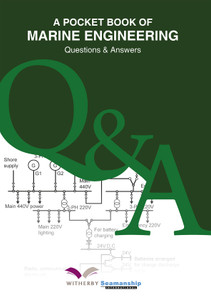
This publication is a guide to the design of propulsion and electric power generation systems. It concentrates primarily on marine systems engineering.
The guide to the design of propulsion and electric power generation systems covers the following topics:
- The principles of marine engineering
- the main components of propulsion and electric power supply systems
- the resistance and propulsion characteristics of ships and the electric power demand
- energy conversion
- the operating principles and characteristics of machinery and equipment on board (including diesel engines, gas turbines, electric motors and screw type propellers)
- matching the propulsion engine to propeller
- ship fuel consumption and exhaust emission.
An Exercises Annex is included, which contains practical examples to help understand and reinforce the concepts within this publication.
Preface
This book is based on some 30 years of practical experience with the design of machinery systems, mainly for naval ships. Both authors have worked on the design of propulsion, electric power generation and auxiliary systems for frigates, submarines and patrol ships. They have lectured on marine engineering at the Delft University of Technology and at the Royal Netherlands Naval College. The book is intended as study material for university and polytechnic high school students, but also as a reference for marine engineers working in the field.
Marine engineering covers the design and operation of machinery and electrical systems and much less the design of the equipment used within these systems. The main topic, consequently, is systems engineering, which involves the design of marine systems, based on the functions which have to be performed on a ship, with a certain task or mission.
There are exercises included in the Exercises Annex at the back of this book. The reader is encouraged to undergo these exercises because it helps to understand the contents of the book. When the exercises are a straightforward application of previously dealt with topics, there is no worked out solution, only the resulting answers. In other cases the solution to the exercise has been worked out.
The book does not cover the control, monitoring and auxiliary (cooling, lubrication, compressed air and fuel) systems necessary for the power plant. Neither does it cover the dynamic behaviour of propulsion and power generation systems or vibration analysis of drive trains.
Preface
About the authors
Nomenclature
Chapter 1: Introduction to Marine Engineering
Chapter 2: Underlying Physical Principles
Chapter 3: Propulsion and Electric Power
Chapter 4: Energy Conversion
Chapter 5: Power Plant Concepts
Chapter 6: An Overview of Main Machinery
Chapter 7: Diesel Engines
Chapter 8: Gas Turbines
Chapter 9: Electrical Components
Chapter 10: Propellers
Chapter 11: Matching Propulsion Engine to Propeller
Chapter 12: Ship Fuel Consumption and Exhaust Emission
List of References and Further Reading
Exercises Annex
Index
IMarEST
IMarEST is the first Institute to bring together marine engineers, scientists and technologists into one international multi-disciplinary professional body.
Here you will find all the information you need about who we are, what we do and why we do it.
You can also find out how IMarEST is governed, learn about the history of IMarEST, founded in 1889, and discover how our associated charity, The Guild of Benevolence, works to support those in the marine community requiring financial support.
- Number of Pages:
- 530
- ISBN:
- 9781856098496
- Binding Format:
- Paperback
- Book Height:
- 245 mm
- Book Width:
- 190 mm
- Weight:
- 1.8 kg
- Author:
Hans Klein Woud and Douwe Stapersma
- Published Date:
- November 2019
- Preview:
- Yes
- Publication Date:
- August 2019





